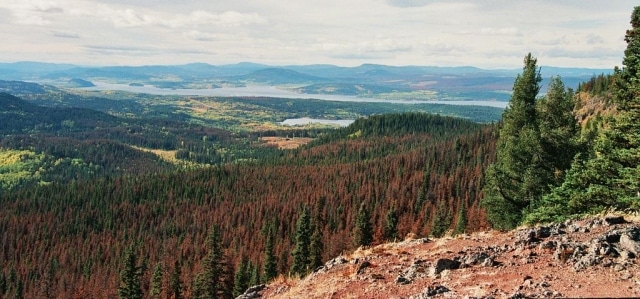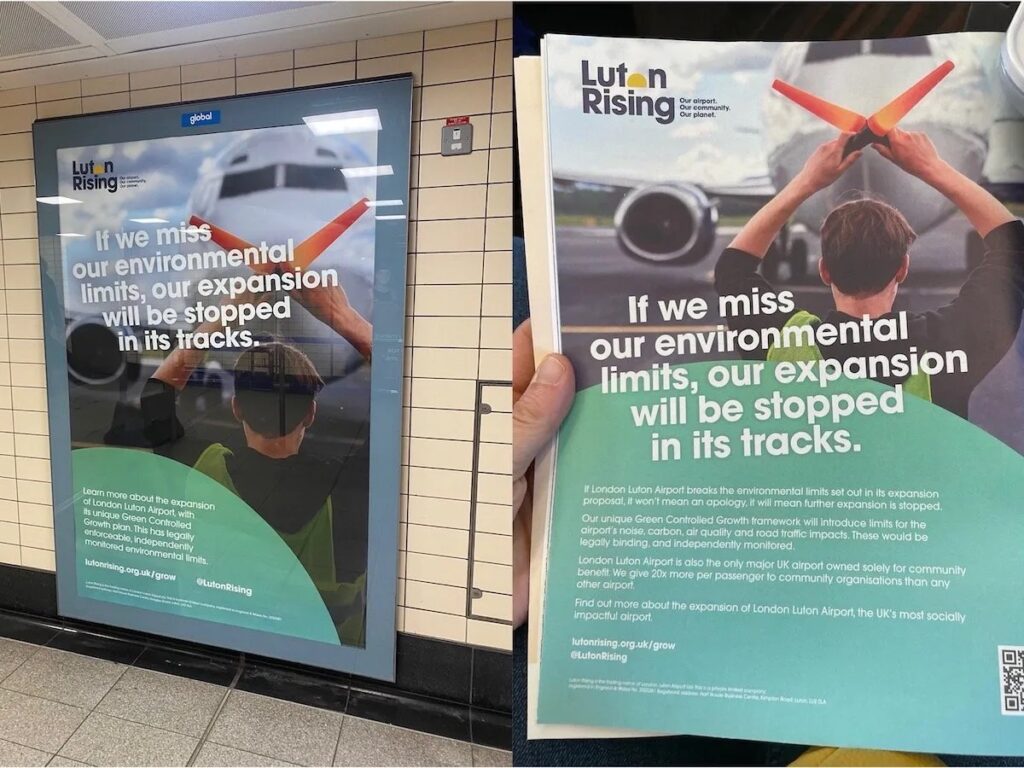This is a guest post by Andrew Gage, staff lawyer with West Coast Environmental Law.
According to the B.C. Government, the Mountain Pine Beetle epidemic – a direct result of climate change – cost British Columbia billions in lost timber value alone – not counting environmental and other damages. This reality has influenced the public consciousness of British Columbians about the cost of climate change, and it doesn’t seem a stretch to suggest that public awareness of climate change’s impacts in B.C. was influenced by the pine beetle epidemic, and therefore that the pine beetle played an important role in B.C. adopting its carbon tax in 2008 – the only jurisdiction in North America to date to do so.
I have suggested that awareness that climate change is costing us here and now may finally drive real climate action to reduce our greenhouse gas emissions (because as John Oliver says, we’ve proven that we “cannot be trusted with the future tense”). It may even prompt discussion about whether the taxpayer – or the polluter – should be the one paying for those costs.
Misunderstanding the science
Fast forward to a couple of weeks ago when Black Media columnist, Tom Fletcher, claimed that there is no scientific evidence that the pine beetle epidemic was actually caused by climate change.
I asked the province’s top forest scientists if [Premier] Campbell was right [that the pine beetle epidemic was caused by human carbon emissions]. The answer? We don’t have enough evidence to conclude that.
Now, climate science is increasingly able to link particular damages to climate change, and even to quantify the contribution of major fossil fuel companies to global greenhouse gas emissions. So it was surprising to hear a report that science did not support linking climate change to a multi-year shift in habitat.
A quick conversation with a forest pathologist who works for the B.C. Government and a few Google searches later and I knew that for many years there has been a wide range of peer-reviewed, scientific journal articles that make a link between the Mountain Pine Beetle epidemic and climate change. For example, this classic 2003 article by Allan Carroll of UBC and others:
The current latitudinal and elevational range of mountain pine beetle is … limited by … climatic conditions unfavorable for brood development. … Given the rapid colonization by mountain pine beetles of former climatically unsuitable areas during the last several decades, continued warming in western North America associated with climate change will allow the beetle to further expand its range northward, eastward and toward higher elevations.
Indeed, Mr. Fletcher also didn’t have a chance to read the recent report of the Nobel Prize-winning Intergovernmental Panel on Climate Change which concluded:
Warm winters in western Canada and U.S. have increased winter survival of the larvae of bark beetles, helping drive large-scale forest infestations and forest die-off in western North America since the early 2000s (Bentz et al., 2010). Beginning in 1994, mountain pine beetle outbreaks have severely affected over 18 million hectares of pine forests in British Columbia, and outbreaks are expanding northwards (Energy, Mines and Resources: Forest Management Branch, 2012).
I provided a couple of articles to Fletcher, via Twitter, and asked him to identify the “top forest scientists” that he had spoken with. After some back and forth, he referred me to the government’s pine beetle website.
Here’s ministry’s current consensus on pine beetle @WCELaw. http://t.co/dugFzp2kyy As for who works there, do your own research.
— Tom Fletcher (@tomfletcherbc) May 3, 2014
I therefore called Tim Ebata, a forest entomologist with the Ministry, and one of the people who “works there” to ask him if he could clarify what this mystery scientist had told Fletcher. So far as the Ministry can determine, Fletcher spoke with a forest geneticist – not an etymologist or someone directly working on pine beetle – and the scientist in question, according to Ebata, “was probably cautious” in what he said about a matter that was outside of his field.
Ebata, who is an entomologist and has specialised in the mountain pine beetle for almost 20 years, said that the mountain pine beetle is “a prime example of the effects of climate change – the classic biological example.” Ebata explained that the epidemic was driven by both an availability of mature pine trees (the preferred host species of the mountain pine beetle) and “a period of above average temperatures that lasted for almost 10 years,” consistent with climate change.
And it’s not just the pine beetle. I’ve written previously about the forest pathologist I also consulted: Alex Woods, who has been recognized by the Professional Foresters for his work in demonstrating a link between a disease known as Dothistroma and climate change. In response to my emails researching this current story, Alex confirms that as a forest pathologist, “I have witnessed significant changes in forest disease behavior apparently linked to changes in our climate… Cold winters are a fundamental regulator for many organisms and we appear to have lost that fundamental regulator.”
Shoddy journalism or a communications challenge?
There’s no getting around the fact that Tom Fletcher’s piece is wrong and irresponsible. It incorrectly implies that scientists are doubtful that human-caused climate change is responsible for the mountain pine beetle epidemic, when actually scientists are very confident that there is a link.
It sounds as if his error comes in part from relying on his recollection of a 2-year old conversation with a scientist who did not specialize in mountain pine beetles, but I suspect that it relates to a misunderstanding about science and scientific certainty.
It is rare that scientists say that they are certain about anything. That’s the nature of the scientific process.
For example, the Intergovernmental Panel on Climate Change doesn’t say that the link between human greenhouse gas emissions and climate change is certain. They say that it is “extremely likely” – which is apparently about 95 per cent certain. That’s about the same level of confidence that scientists have that smoking causes cancer. And that’s in a rigorous process where the scientists have made every effort to quantify their levels of certainty and doubt.
Faced with doubt – even if it’s a little doubt – Fletcher may have leapt to the conclusion that the link between climate change and the mountain pine beetle is not really proven (the terminology used by the IPCC to describe its levels of certainty has been criticized as confusing). But proof – whether scientific, legal or journalistic – isn’t the same as certainty. The reality is that there is a lot of proof that human caused climate change did drive the mountain pine beetle, and we can be pretty darn confident of that fact.
Who should pay?
To date the costs of the mountain pine beetle epidemic has been born by the communities impacted by the epidemic, by the taxpayer and by future generations.
The carbon tax – which is revenue neutral – doesn’t change that. It does not generate revenue for communities hit by the mountain pine beetle to rebuild and adapt.
But perhaps we should have that conversation. Richard Heede’s Carbon Majors work identifies 90 fossil fuel producers that are responsible for 63 per cent of the greenhouse gases in the atmosphere. Those 90 producers have received major financial gains from their production and sale of fossil fuels, in large part because they are not paying for costs associated with those fuels and their use – costs like the mountain pine beetle epidemic. In some cases these same companies have sought to spread doubt about the scientific consensus and have lobbied against climate action.
Chevron USA is responsible for approximately 3.5 per cent of the greenhouse gases in the global atmosphere to date. That means that for each billion dollars of lost timber value, or environmental damage, that B.C. suffers as a result of the mountain pine beetle epidemic, something like $35 million could be said to have been caused by Chevron.
Perhaps we should send them a bill.
Andrew Gage is a staff lawyer with West Coast Environmental Law working on climate change and a lead author of the Environmental Law Alert Blog. Follow West Coast Environmental Law on Twitter at @WCELaw.
Image credit: Wikimedia Commons. Fraser Lake area impacted by Mountain Pine Beetle. Red trees are dead or dying.
Subscribe to our newsletter
Stay up to date with DeSmog news and alerts






